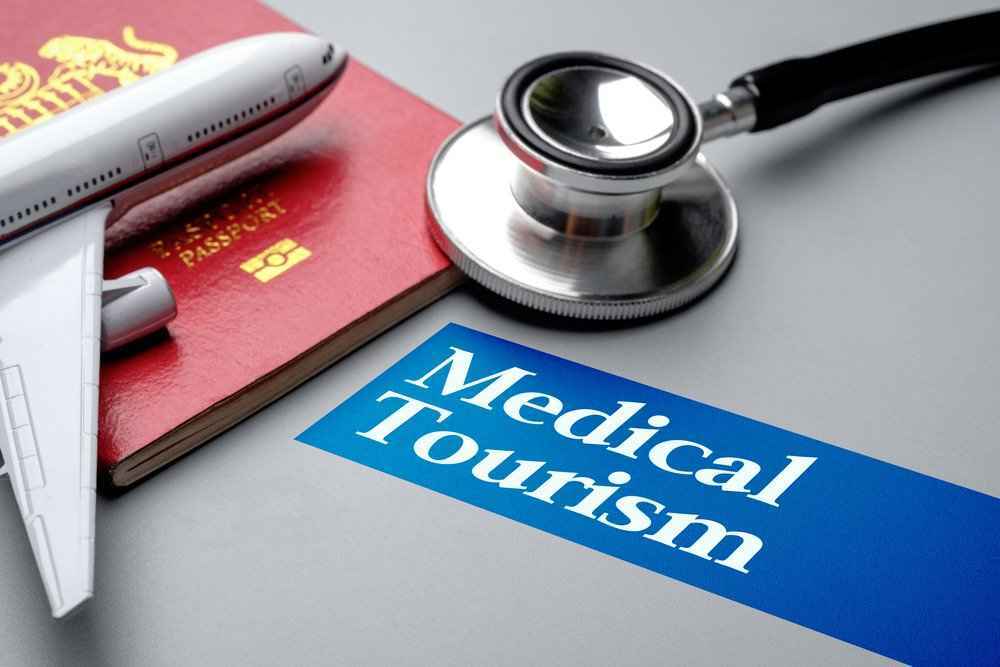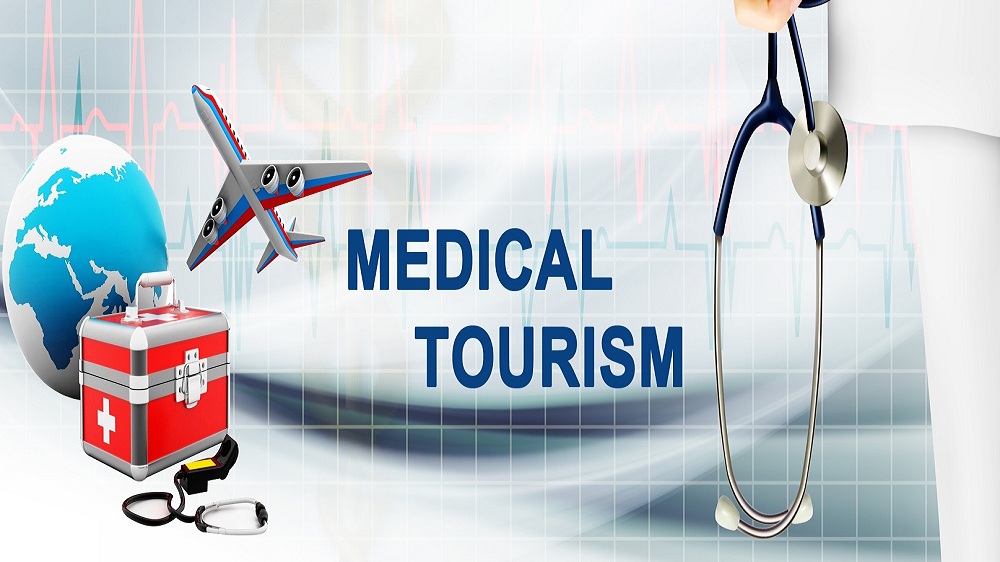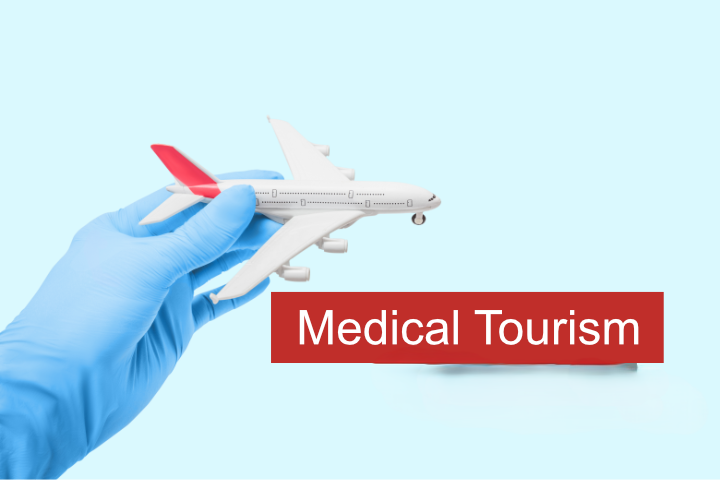Overview of Medical Tourism in Asia
Definition
Medical tourism in Asia refers to the practice of traveling abroad to receive medical care that offers superior value or higher quality than available in one’s home country. This phenomenon has gained significant traction, especially in the Asia-Pacific region, where a blend of affordability, advanced medical technology, and skilled professionals makes it an attractive destination for health seekers.

Market Size
The medical tourism market in Asia is thriving, currently valued at approximately USD 111.3 billion. It is projected to experience a robust compound annual growth rate (CAGR) of around 15% until 2028. This growth is fueled by increasing awareness of global healthcare options and the desire for cost-effective treatments.
Factors Driving Growth
Advanced Facilities
One of the primary reasons for the rise of medical tourism in Asia is the availability of advanced medical facilities. Countries like Singapore and South Korea are renowned for their state-of-the-art hospitals equipped with the latest technology.
Cost-Effective Treatments
Another significant driver is the cost-effectiveness of treatments. The prices in Asia can be substantially lower than in Western countries, making it an appealing choice for many patients seeking quality care without the hefty price tag.
Leading Countries
Key players in the medical tourism sector include Malaysia, Thailand, Japan, and Singapore. These countries are recognized for providing high-quality healthcare and innovative treatments, ensuring patients receive exceptional care during their medical journeys.
Specialized Options
Countries such as South Korea are particularly noted for offering extensive elective medical treatments, especially in the beauty sector. The combination of advanced techniques and competitive pricing positions South Korea as a leader in medical tourism.
Popular Medical Tourism Destinations
Malaysia
- Medical Travelers: In 2019, Malaysia welcomed 1.22 million medical travelers, earning accolades like “Health and Medical Tourism: Destination of the Year” at the 2020 IMTJ Medical Travel Awards.
- Medical Services: Malaysia offers diverse specialties, including cardiology, oncology, orthopedics, fertility treatments, cosmetic surgery, and dentistry. Its expertise in cardiology and fertility treatments is particularly noteworthy.
- International Patient Centre: The National Heart Institute has established an International Patient Centre to assist medical tourists with comprehensive services, including visa assistance and post-treatment coordination.
- Regional Outreach: Liaison offices in Myanmar, Cambodia, and Indonesia promote Malaysia as a premier destination for medical tourism.
Thailand
- Market Position: Thailand ranks among the top five markets in the Medical Tourism Index (MTI) for 2020-2021.
- Cost Advantage: Healthcare costs in Thai hospitals are 50-80% lower than in the U.S., Canada, and the EU.
- Accreditations: Home to Asia’s largest private hospital, Thailand has 37 JCI-accredited institutions, ensuring high standards of care.
- Variety of Services: The country specializes in services like cosmetic surgery, gender reassignment surgeries, regenerative medicine, and stem cell therapies.
Japan
- Market Goals: Japan aimed to attract 430,000 international patients annually by 2020, focusing on oncology and cardiovascular treatments.
- Advanced Technology: The country is known for innovations such as heavy particle radiotherapy and robot-assisted surgeries.
- Government Support: Policies, including the introduction of medical visas, enhance Japan’s attractiveness for medical tourists.
Singapore
- Healthcare Ranking: Recognized by the WHO for having one of the top healthcare systems globally, Singapore is a trusted destination for high-quality medical care.
- Source Markets: Indonesia leads as the primary source market, followed by Malaysia and China.
- Patient Services: Singapore offers International Patient Service Centres that function like medical travel agencies, assisting international patients with their medical needs and appointment coordination.
South Korea
- Focus on Elective Treatments: The medical tourism industry in South Korea is oriented towards enhancing physical beauty through procedures such as plastic surgery and dermatology.
- Government Support: The South Korean government provides tax breaks and certifications for medical tourism agencies.
- Market Share: South Korea holds 25% of the global medical beauty market, witnessing growth in medical tourism from 60,000 visitors in 2009 to nearly half a million in 2019.
Future Outlook
Opportunities for Growth
As the Asia-Pacific region continues to expand in medical tourism, there will be increasing demand for innovative products and therapies. Multinational corporations (MNCs) are encouraged to engage with diverse stakeholders to leverage this growth, ensuring that medical tourists receive the highest standard of care.
This comprehensive overview highlights the significance of medical tourism in Asia, illustrating its growth trajectory, key destinations, and the specialized services offered to international patients.
Medical Tourism in Asia: A Guide to Affordable, High-Quality Healthcare
Have you ever considered traveling abroad for medical care to save money? This growing trend, known as medical tourism in Asia, is particularly flourishing. Each year, hundreds of thousands of people discover the benefits of seeking medical treatments in countries like Thailand, India, and Iran, where they find high-quality care at significantly lower prices.
Whether you’re considering a cosmetic procedure, knee replacement, heart surgery, or even just a routine check-up, medical tourism in Asia can save you thousands of dollars compared to costs in your home country. Not only do you get to experience a new culture, but you also receive world-class treatment. Many hospitals in Asia are accredited by international organizations, and their medical staff often receive training in Western countries.
If you’re facing a health issue or looking to save on routine care, becoming a medical tourist might be the ideal solution. Asia offers a unique combination of affordable healthcare and unforgettable experiences, ensuring you return home healthier and with extra money in your pocket. Imagine leaving with a new smile or walking pain-free—all just a flight away!
Why Asia Is a Top Destination for Medical Tourism
Lower Costs and High-Quality Care
One of the most compelling reasons to consider medical tourism in Asia is the significantly lower costs without compromising the quality of care. For instance, Iran has emerged as a leading destination for cosmetic surgery, often referred to as the global capital of nose surgery. Every year, hundreds of thousands of health tourists flock to Iran for procedures such as rhinoplasty or hair transplants, with costs 30-50% lower than in many Western countries, starting from as low as $1,000.
In Thailand, a heart bypass may cost around $30,000, in stark contrast to the $113,000 price tag in the U.S. Similarly, India offers substantial savings for major surgeries, with a hip replacement costing approximately $7,000 compared to $50,000 in the U.S. Indian hospitals boast outstanding success rates and cutting-edge medical technology, making them attractive to medical tourists.
Singapore maintains a robust healthcare system known for its high standards. Although costs are higher than in Thailand or India, they remain lower than in Western nations. Singapore specializes in areas like oncology and cardiology, drawing international patients seeking advanced treatments.
In Malaysia, cosmetic surgeries and dental care can cost 60-80% less than in the United States. The country’s private hospitals are accredited by international organizations, ensuring quality and safety standards.
The Rise of Medical Tourism in Asia
The surge in medical tourism in Asia can be attributed to two main factors:
- Lower Costs: In addition to affordable medical care, the overall cost of living in many Asian countries is lower. This makes not only medical treatments but also travel and accommodation budget-friendly, making healthcare accessible to a broader audience.
- High Quality: Many leading hospitals in Asia feature state-of-the-art facilities and employ doctors trained in prestigious medical schools from the U.S., UK, and other countries. Stringent accreditation standards ensure that patients receive high-quality care. Many individuals are realizing they can receive excellent treatment for a fraction of the price.
However, it’s essential to be aware of the potential risks involved in medical tourism. Issues such as follow-up care, infection rates, and complications may arise, underscoring the need for thorough research on healthcare providers before making a decision.
Popular Procedures and Destinations
Many people choose to travel to Asia for various medical procedures, attracted by the combination of affordability and quality. Here are some of the most common procedures sought by medical tourists:
- Cosmetic Surgery: Countries like South Korea, Thailand, and India are renowned for affordable cosmetic procedures, including facelifts, liposuction, and rhinoplasty.
- Dental Care: Major cities in Malaysia, Thailand, and the Philippines have become popular destinations for high-quality dental work, including implants and crowns.
- Orthopedic Procedures: India, Singapore, and Thailand offer competitive pricing for hip and knee replacements, making them go-to choices for those in need of orthopedic care.
Leading Medical Tourism Destinations
- Thailand: Known for its advanced private hospitals and highly skilled doctors, Thailand is a top destination for cosmetic surgery and dental care. Bangkok is particularly popular for heart surgeries.
- India: Home to world-class healthcare at lower costs, India excels in cardiology, orthopedics, and transplants. Major cities like Delhi, Mumbai, and Bangalore have reputable hospitals catering to international patients.
- Singapore: While costs are higher than in other Asian countries, Singapore is a trusted destination for advanced medical technology and high-quality care, specializing in oncology and cardiology.
- South Korea: As a global hub for cosmetic and plastic surgery, South Korea has the highest number of cosmetic surgeries per capita, making it a popular choice for aesthetic procedures.

In summary, medical tourism in Asia presents a unique opportunity for individuals seeking affordable healthcare while allowing them to explore exotic destinations. With careful planning and assistance from medical tourism facilitators, individuals can enjoy high-quality treatments that fit their budgets.

